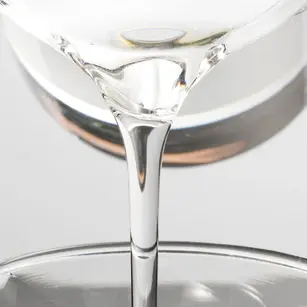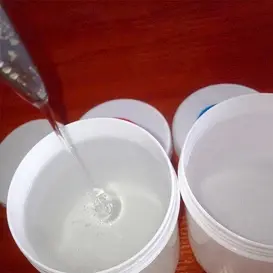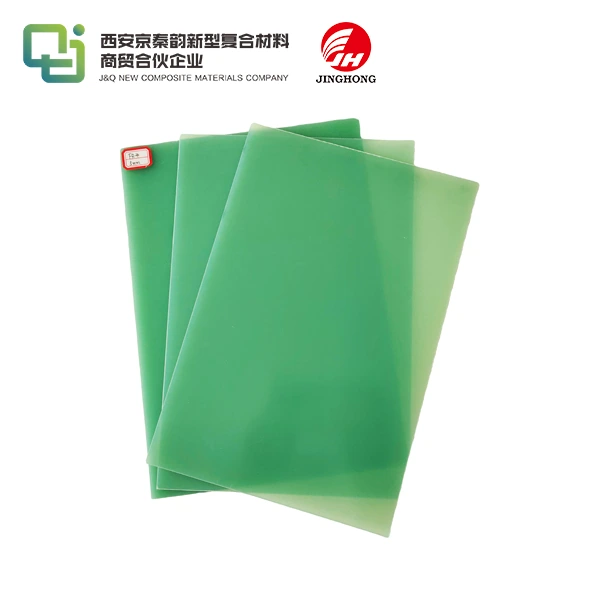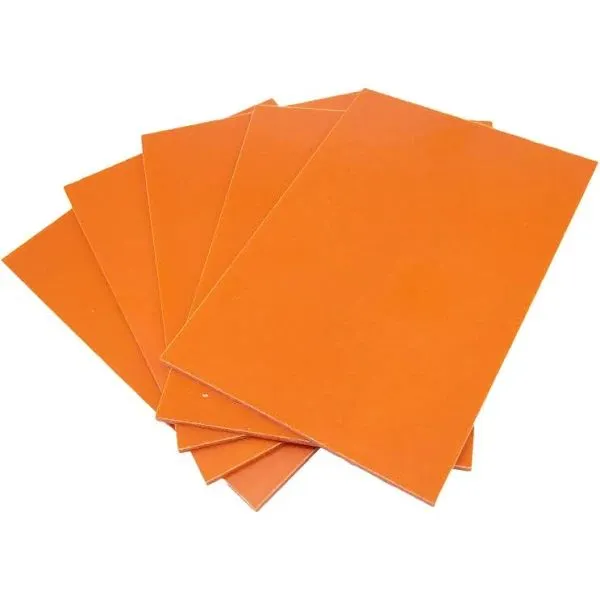Basic knowledge of epoxy resin and epoxy adhesive
2024-01-24
(1) Concept of Epoxy Resin
Epoxy resin refers to a general term for polymer compounds with a polymer chain structure containing two or more epoxy groups, which belong to thermosetting resins. The representative resin is bisphenol A type epoxy resin.

(2) Characteristics of Epoxy Resin (usually refers to bisphenol A type epoxy resin)
1. Low application value as a standalone substance; it needs to be used in conjunction with a curing agent to have practical value.
2. High bonding strength: Epoxy resin adhesive ranks top in bonding strength among synthetic adhesives.
3. Low curing shrinkage: Epoxy resin adhesive has the smallest shrinkage in adhesives, which is one of the reasons for its high curing bonding strength.
For example: Phenolic resin adhesive: 8-10%; Organosilicon resin adhesive: 6-8%;
Polyester resin adhesive: 4-8%; Epoxy resin adhesive: 1-3%
After modified processing, the shrinkage rate of epoxy resin adhesive can be reduced to 0.1-0.3%, and the coefficient of thermal expansion is 6.0×10-5/°C.
4. Good chemical resistance: The ether groups, benzene rings, and aliphatic hydroxyl groups in the curing system are not easily eroded by acid and alkali. It can be used for two years in seawater, petroleum, kerosene, 10% H2SO4, 10% HCl, 10% HAc, 10% NH3, 10% H3PO4, and 30% Na2CO3; and can be immersed for half a year in 50% H2SO4 and 10% HNO3 at room temperature; can be immersed for one month in 10% NaOH (100°C) without changes in performance.
5. Excellent electrical insulation: The breakdown voltage of epoxy resin can be greater than 35kv/mm.
6. Good process performance, stable product dimensions, good resistance, and low water absorption.
The advantages of bisphenol A type epoxy resin are good, but it also has its disadvantages: ①. High operational viscosity, which is somewhat inconvenient in construction. ②. Brittle cured material, low elongation at break. ③. Low peel strength. ④. Poor resistance to mechanical and thermal shock.

(3) Application and Development of Epoxy Resin
1. Development history of epoxy resin: Epoxy resin was patented by P. Castam in Switzerland in 1938. The first epoxy adhesive was developed by Ciba Geigy in 1946, and epoxy coatings were developed by S.O. Creentee in the United States in 1949. China began industrial production of epoxy resin in 1958.
2. Applications of epoxy resin:
① Coating industry: Epoxy resin has the largest demand in the coating industry. Water-based coatings, powder coatings, and high solid content coatings are currently widely used. They can be widely used in industries such as pipelines, automobiles, ships, aerospace, electronics, toys, and crafts.
② Electronic and electrical industry: Epoxy resin adhesive can be used for electrical insulation materials, such as sealing and impregnation of rectifiers and transformers; sealing and protection of electronic components; insulation treatment and bonding of electromechanical products; sealing and bonding of batteries; surface coating of capacitors, resistors, and inductors.
③ Hardware, handicrafts, and sports goods industry: It can be used in products such as nameplates, jewelry, trademarks, hardware, rackets, fishing gear, sports goods, and handicrafts.
④ Optoelectronics industry: It can be used for encapsulation, potting, and bonding of LED, digital tubes, pixel tubes, electronic displays, and LED lighting products.
⑤ Construction industry: Widely used in roads, bridges, floors, steel structures, building coatings, embankments, engineering construction, cultural relic repairs, etc.
⑥ Adhesives, sealants, and composite materials: Bonding various materials such as wind turbine blade, crafts, ceramics, glass, composite of carbon fiber sheets, and sealing of microelectronic materials, etc.
(4) Characteristics of Epoxy Adhesive
1. Epoxy adhesive is based on the characteristics of epoxy resin, and its properties are further processed or modified to meet specific requirements. Typically, epoxy adhesive needs to be used with a curing agent, and it needs to be thoroughly mixed to fully cure. Generally, epoxy adhesive is referred to as the A component or base, and the curing agent is referred to as the B component or curing agent (hardener).
2. The main characteristics of epoxy adhesive before curing include: color, viscosity, specific gravity, ratio, gel time, working time, curing time, thixotropy (thixotropy), hardness, surface tension, etc.
Viscosity: The internal frictional resistance generated by colloids in flow determines its value based on factors such as the type of substance, temperature, and concentration.
Gel time: The time from the start of the reaction to the critical state when the colloid tends to solid during the curing of the adhesive is determined by factors such as the mixing amount and temperature of the epoxy adhesive.
Thixotropy: This characteristic refers to the phenomenon that the colloid becomes thinner under external force (shaking, stirring, vibration, ultrasonic, etc.), and when the external force stops, the colloid returns to its original consistency.
Hardness: The ability of a material to resist external forces such as indentation and scratches. There are different types of hardness depending on the test method, including Shore hardness, Brinell hardness, Rockwell hardness, Mohs hardness, Barcol hardness, and Vickers hardness.
Surface tension: The attraction of molecules inside the liquid makes the molecules on the surface subject to a force parallel to the surface, which minimizes the surface area of the liquid and forms a force parallel to the surface, known as surface tension. Or, it is the unit length of mutual traction force between adjacent parts on the surface, which is a manifestation of molecular forces. The unit of surface tension is N/m.

3. The main characteristics of epoxy adhesive after curing include: resistance, dielectric strength, water absorption, compressive strength, tensile strength, shear strength, peel strength, impact strength, heat distortion temperature, glass transition temperature, internal stress, chemical resistance, elongation at break, shrinkage coefficient, thermal conductivity, dielectric constant, weather resistance, aging resistance, etc.
3.1 Resistivity: Describes the electrical resistance characteristics of a material, usually expressed as surface resistance or volume resistance.
3.2 Dielectric strength: Also known as breakdown strength (insulation strength), the higher the voltage applied to the ends of the adhesive, the greater the electric field force experienced by the charges inside the material, making it easier for the adhesive to break down. The minimum voltage that causes insulation breakdown is called the breakdown voltage of the material. When a 1 mm thick insulating material breaks down, the voltage required is called the insulation breakdown strength, also known as the dielectric strength, in units of kV/mm. The insulation performance of insulating materials is closely related to temperature. The higher the temperature, the worse the insulation performance of the insulating material. To ensure insulation strength, each type of insulating material has a suitable maximum allowable operating temperature, below which it can be used safely for a long time, and beyond which it will rapidly age.
3.3 Water absorption: The measure of the degree to which a substance absorbs water. It refers to the percentage increase in mass when a substance is soaked in water for a certain period of time at a certain temperature.
3.4 Tensile strength: The maximum tensile stress when the adhesive is stretched to the point of fracture. Also known as tear strength, tensile strength, resistance to tension, or tensile strength. Unit: MPa.
3.5 Shear strength: Also known as shear resistance, it refers to the maximum load that can be borne per unit area parallel to the bonding area. The common unit used is MPa.
Peel strength: Also known as peel resistance, it refers to the maximum destructive load per unit width, which measures the ability to resist line forces. The unit is kN/m.
3.6 Elongation: The increase in length of the colloid under tensile stress, expressed as a percentage of the original length.
3.7 Heat deflection temperature: A measure of the heat resistance of the cured material. It is the temperature at which the test sample immersed in a suitable heat transfer medium with a constant heating rate, under the action of a simply supported beam static bending load, reaches the specified bending deformation, known as the heat deflection temperature, abbreviated as HDT.
Glass transition temperature: The narrow temperature range of the transition of the cured material from a glassy state to an amorphous or highly elastic or fluid state (or the reverse transition), approximately the midpoint, known as the glass transition temperature, usually denoted as Tg, is an indicator of heat resistance.
3.8 Shrinkage ratio: Defined as the percentage of the shrinkage amount to the original size before shrinkage, where the shrinkage amount is the difference between the size before and after shrinkage.
3.9 Internal stress: Refers to the stress generated inside the colloid (material) due to factors such as defects, temperature changes, solvent action, etc., in the absence of external force.
3.10 Chemical resistance: The ability to resist acids, alkalis, salts, solvents, and other chemicals.
3.11 Flame resistance: The ability of a material to resist combustion when in contact with a flame, or to inhibit continued burning when removed from the flame.
3.12 Weatherability: The ability of a material to withstand exposure to conditions such as sunlight, temperature variations, wind, and rain.
3.13 Aging: A series of physical or chemical changes that occur in the colloid (material) during processing, storage, and use, due to the action of external factors (heat, light, oxygen, water, radiation, mechanical force, chemical media, etc.), resulting in crosslinking, embrittlement, cracking, discoloration, roughening, foaming, chalking, delamination, gradual deterioration of performance, and ultimately loss of mechanical properties, making it unusable. This phenomenon is called aging.
3.14 Dielectric constant: Also known as capacitance, permittivity. It refers to how much "static electrical energy" can be stored in each "unit volume" of a substance under a "unit potential gradient". The larger the "dielectric constant" of the colloid (indicating poorer quality), and when there is current working in two adjacent conductors, it is more difficult to achieve complete insulation, in other words, it is easier to produce some degree of leakage. Therefore, the dielectric constant of insulating materials should generally be as small as possible under normal circumstances. The dielectric constant of water is 70, and very little water can cause significant changes.
4. Most epoxy adhesives are thermosetting adhesives, and they have the following main characteristics: the higher the temperature, the faster the curing; the more mixed in one go, the faster the curing; there is exothermic phenomenon during the curing process, etc.







